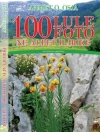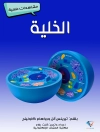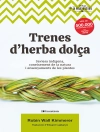The book is presenting a comprehensive information on fundamental, and applied knowledge of Plasmodiophora brassicae Woronin. infecting cruciferous crops, and weeds. Clubroot of crucifers has spread over more than 88 countries of the world with average annual loss of cruciferous crops from 10-15 per cent at global level. It is considered as a disease of cultivation since once introduced in a field, its inoculum piles up year by year in the form of resilient resting spores of P. brassicae which spreads in the field through field operations. This disease is very unique since the pathogen can survive in the soil in the rhizosphere of non-host plants in addition to its main host cruciferous species, cultivated or wild. This book complies inclusive information about the disease, its geographical distribution, symptoms, host range, yield losses, and disease assessment scales. The book also explores host-parasite interactions in the form of seed infection, disease cycle, process of infection, pathogenesis, epidemiology and forecasting. Chapters discuss the genetic and molecular mechanisms of host-parasite relationships, management practices including cultural, chemical, biological control practices, and other integrated approaches. The book is immensely useful to researchers, teachers, extension specialists, farmers, and all others who are interested to grow healthy and profitable cruciferous crops all over the world. Also the book serves as additional reading material for undergraduate and graduate students of agriculture and especially plant pathology. National and international agricultural scientists, policy makers will also find this to be a useful read.
Cuprins
Chapter 1.Clubroot perspective.- Chapter 2. The disease- clubroot.- Chapter 3. The pathogen: Plasmodiophora brassicae.- Chapter 4. Electron microscopy and ultra-structures.- Chapter 5. Pathogenic variability.- Chapter 6. Perpetuation and survival of the pathogen.- Chapter 7. Infection and pathogenesis.- Chapter 8. Disease cycle.- Chapter 9. Epidemiology and disease forecasting. Chapter 10. Biochemistry of host-pathogen interaction.- Chapter 11. Host resistance.- Chapter 12. Genomics of clubroot pathogen and pathogenesis.- Chapter 13. Disease management.- Chapter 14. Techniques.- Chapter 15. Clubroot of crucifers-an introspection epilogue.- Chapter 16. Future priority areas of clubroot research for better management.
Despre autor
Dr. Govind Singh Saharan, Ex. Professor and Head, Department of Plant Pathology, CCS HAU, Hisar. Dr. Saharan has conducted research in diverse fields of Plant Pathology and had 250 articles in National and International Journals. He has been editor/author of several books, monographs, and Crop Production Compendium (CABI). He is on the panel of Experts of SAU, ICAR, IARI, CSIR, UGC, and Department of Biotechnology. Dr. Saharan has been a visiting Professor at University of Alberta, Edmonton, Canada; Agriculture and Agri-Food Canada, Saskatoon, Canada, and Rothamsted Research, IACR, Harpenden, UK.
He has been President (NZ) of the Indian Phytopathological Society, Editor-in-Chief, Journal of Mycology and Plant Pathology, Journal of Oilseed Brassica, and President of the Indian Society of Mycology and Plant Pathology. He has been awarded with Y. L. Nene, Outstanding Plant Pathology Teacher by ISMPP, Udaipur, and Life Time Achievement Award by the Society for Rapeseed-Mustard Research, Bharatpur, India..
Dr. Naresh Kumar Mehta, Former Associate Dean, Professor and Consultant Faculty, Department of Plant Pathology, CCS HAU, Hisar. He has been teaching Plant Pathology courses to UG and PG students and conducted research in diverse fields of Plant Pathology especially on rapeseed-mustard. He has guided several M. Sc. and Ph. D students. He has published about 200 research articles and editor/author of several books, book chapters, review articles and teaching manuals. Dr. Mehta has been President of INSOPP, Ludhiana and Editor-in-Chief ISMPP and served as member of Editorial board of various phytopathological societies in India. Dr. Mehta has been awarded Y. L. Nene, Outstanding Plant Pathology Teacher by ISMPP, Udaipur and Ms. Manju Utereja Memorial Gold Medal, HAU. He is on the panel of Experts of SAU, ICAR, UGC, and member of various National and International committees. Dr. Mehta has been a visiting scientist to University of Alberta, Edmonton, Canada.
D
r. Prabhu Dayal Meena, Principal Scientist (Plant Pathology) at ICAR-Directorate of Rapeseed-Mustard Research, Bharatpur, Rajasthan, India. He has conducted research on different aspects of rapeseed-mustard diseases including host resistance, management, epidemiology and biology of crucifer’s pathogen. He has published several research papers, reviews, and book chapters in reputed journals, and number of books including five by Springer.
Dr. Meena has been honored with Fellow of Indian Society of Mycology and Plant Pathology, Plant Protection Association of India, Indian Society of Oilseed Research, Society for Rapeseed-Mustard Research, Indian Phytopathological Society, and awarded Dr. P.R. Kumar Outstanding Brassica Scientist Award, Society for Rapeseed-Mustard Research. He is founder Secretary and managing editor of Society for Rapeseed-Mustard Research. He visited UK during 2007 under Indo-UK Collaborative Research on Oilseed Brassica crops. He has been guided several M. Sc. and Ph.D students.












